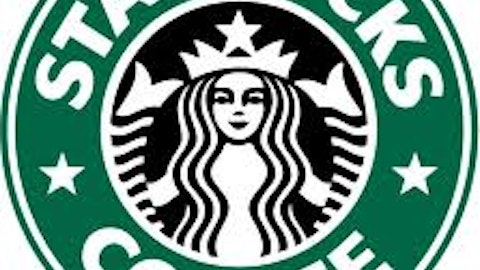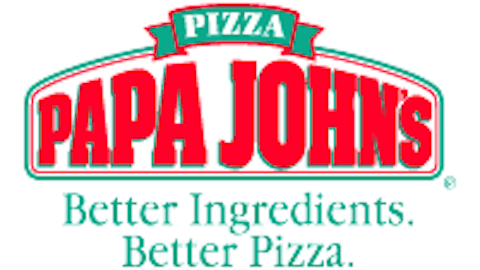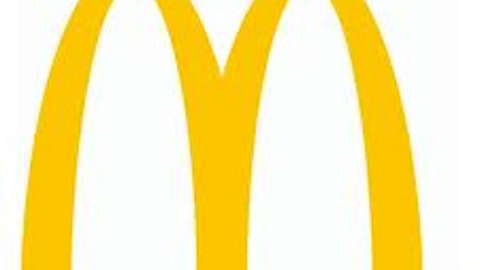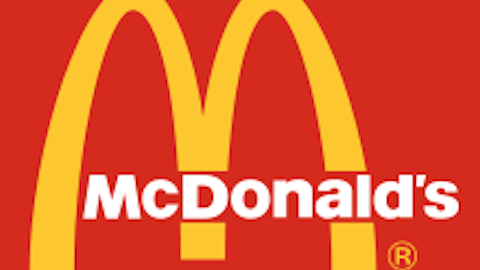Looking at dividend paying companies from the S&P 500’s list of Dividend Aristocrats represents a good starting point for investors looking for stocks that provide income. Companies that increased dividends for more than 25 consecutive years qualify for inclusion on this list.
Of course, investing in companies based solely on their inclusion on a list never stands as a good idea. You need to perform research and judge for yourself whether these publicly traded businesses will continue to maintain and grow their cash flow: the life blood of any business and the key to increasing shareholder wealth over the long term. The three companies below present the best chances of doing just that.
Spices and flavorings
operates in the necessary business of spices, salts, and flavorings. McCormick & Company, Incorporated (NYSE:MKC) operates in two segments: consumer and industrial. The consumer segment involves selling products to supermarkets for individual consumption in domestic and international markets. The industrial segment sells directly to restaurant chains.
Last year, McCormick & Company, Incorporated (NYSE:MKC) increased revenue and free cash flow 9% and 42% respectively. McCormick’s return on equity clocked in at 24%.
The year 2012 marked the 27th year in which McCormick & Company, Incorporated (NYSE:MKC) paid a dividend, allowing it to stay on the list of Dividend Aristocrats. The company paid out 48% of its free cash flow in dividends. Currently it pays $1.36 per share per year translating into a 1.9% dividend yield.
In its most recent quarter, McCormick & Company, Incorporated (NYSE:MKC) ran into some friction in its fundamentals. The consumer business sales segment grew 4%, while its industrial sales segment declined 1%, stemming from lower consumer spending in restaurants. Consumers realize it’s cheaper and safer to eat at home. The bird flu still keeps consumers away in markets such as China.
McCormick & Company, Incorporated (NYSE:MKC) sports a decent balance sheet. Cash only clocked in at 5% of stockholder equity; however, long term debt stands at 46% of equity as end of last year.
McCormick’s “Multiple Management” program enables employees to innovate and develop within the company. In fact, employees own 21% of the company via its 401k plan. This will help in producing new products and gaining valuable shelf space in stores and restaurants in order to expand its brand. This company is in it for the long haul.

The golden arches
Global restaurant chain McDonald’s Corporation (NYSE:MCD) and its franchisees operate more than 34,000 restaurants. Its golden arches conjure up images of tasty fast food available at every interstate exit, city, and small town. Its ubiquity certainly grants the company the purchasing power to profitably sell products at a low price.
Its size makes it difficult to continue expansion at a brisk pace. Last year, McDonald’s Corporation (NYSE:MCD) revenue increased 2% with free cash flow declining 11%, stemming mostly from higher capital expenditures, part of which went toward the remodeling of stores.
McDonald’s Corporation (NYSE:MCD) sits on a decent balance sheet with cash clocking in at 15% of stockholder’s equity as the end of 2012. Long term debt to equity stands at 89%, which is in the high range. Return on equity came in at an impressive 36%.
McDonald’s Corporation (NYSE:MCD) paid out 74% of its free cash flow in dividends in 2012. Currently the company pays $3.08 per share per year, yielding 3.1%. This company’s position on the Dividend Aristocrat list stems from steady dividend increases since 1976 or 37 years.
In its most recent quarter, McDonald’s Corporation (NYSE:MCD) faced headwinds from international markets. McDonald’s comparable store sales declined 30 basis points in Asia due to the bird flu scare. An ongoing recession in Europe caused McDonald’s Corporation (NYSE:MCD) comparable sales to decline 10 basis points in that region. Product and menu innovation contributed to a 1% comparable sales increase in the U.S.
Look for slow but steady growth not only in the dividends but the fundamentals that drive them. Moreover, having little room for expansion will compel the company to continue paying out a huge chunk of its cash flow in dividends.
The company faces a slow paradigm shift from a fast food culture to a more health conscious one. Future growth will most likely come from product and menu innovation rather than from outright geographical expansion.
The beverage king
Global beverage giant The Coca-Cola Company (NYSE:KO)sells “sparkling” beverages such as its namesake The Coca-Cola Company (NYSE:KO) as well as Sprite and Fanta. It also sells a number of well known “non-sparkling” beverages such as the Minute Maid juice line, Gold Peak tea, and Dasani bottled water.
Last year, The Coca-Cola Company (NYSE:KO) grew its revenue and free cash flow 3% and 20% respectively. Cash came in at 41% of stockholder equity. Long-term debt stood at a low 44% of stockholder equity. Return on equity came in at 27%.
It raised its dividend every year since 1963, an amazing 50 year run. Last year the company paid out 57% of its free cash flow in dividends. Currently the company pays $1.12 per share per year and yields 2.7% as of this writing.
The company currently faces headwinds from faltering global economics and a slow shift in consumer preference. Recession in Europe and market saturation in North America caused unit case volume to decline 4% and 1% respectively in those areas in the most recent quarter.
People increasingly favor healthier non-sparkling beverages versus its soda offerings. Its sparkling volume remained flat in The Coca-Cola Company (NYSE:KO)’s most recent quarter while its non-sparkling unit case volume increased 6%.
On the bright side The Coca-Cola Company (NYSE:KO) continues to make robust inroads into the emerging markets such as Thailand and India, which grew volume 24% and 18% respectively.
Future fundamental and dividend growth will come from emerging markets and sales in non-sparkling beverages. The Coca-Cola Company (NYSE:KO)’s vast distribution infrastructure will allow this company to profitably sell its products cheaply.
Conclusion
Look for these companies to utilize their vast resources to create new products and profitably sell them at low prices in response to ever-changing consumer demands. This will grow top and bottom lines, providing fuel for future dividend growth.
William Bias owns shares of Coca-Cola and McDonald’s. The Motley Fool recommends Coca-Cola, McCormick, and McDonald’s. The Motley Fool owns shares of McDonald’s. William is a member of The Motley Fool Blog Network — entries represent the personal opinion of the blogger and are not formally edited.
The article 3 Dividend Aristocrats for Your Portfolio originally appeared on Fool.com is written by William Bias.
Copyright © 1995 – 2013 The Motley Fool, LLC. All rights reserved. The Motley Fool has a disclosure policy.





